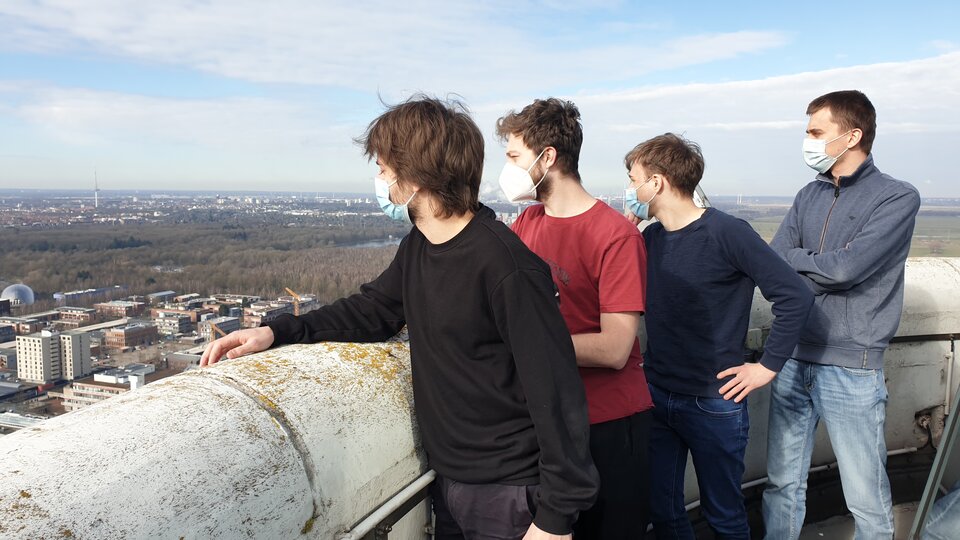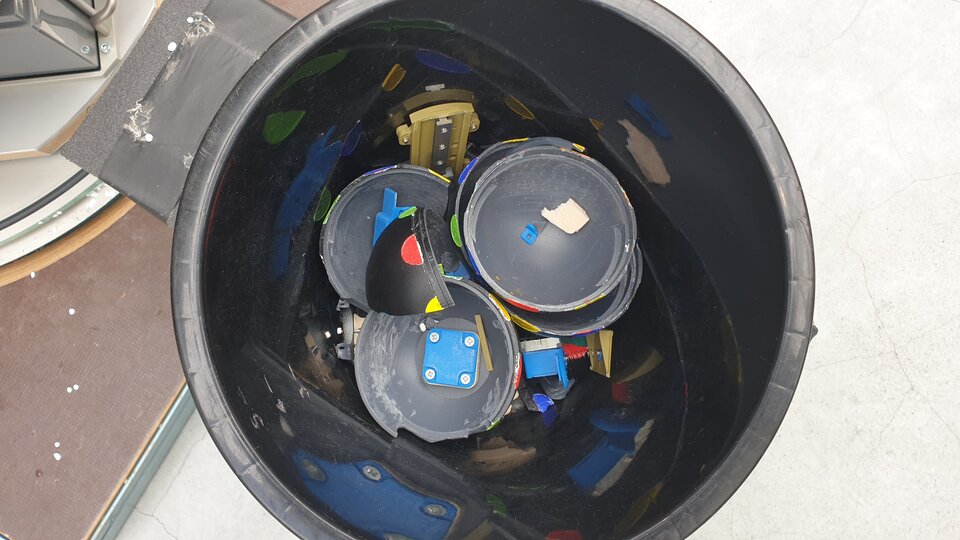Lights! Cameras! Black Spheres
Last week a team of four master students from AGH University of Science and Technology in Kraków, Poland, completed their campaign successfully in Bremen University’s ZARM Drop Tower in Germany. Originally meant to take place at the end of 2020, the campaign was delayed until March 2021 due to Covid-19 travel restrictions.
Since October 2020, the team has been working very closely with ZARM and ESA Academy to find a suitable 2-week time slot whereby the impact of travel restrictions, quarantines and social distancing measures would be minimized allowing for a campaign to proceed.

As soon as a mid-March window was identified, all partners mobilised and took the necessary steps to meet at the ZARM Drop Tower in Bremen. As in all campaigns, the first week was dedicated to integration of the hardware into the capsule. The experiment consisted mainly of two motors mounted to the underside of a platform each spinning up a threaded rod onto which was affixed a sphere. Once in microgravity, the motors would rapidly spin in the opposite direction to unscrew the spheres into the void of the capsule. The speed and direction of the motors was carefully simulated by the team before hand to ensure they maximized the entire free floating area of the capsule. Once released, the spheres’ movements would be recorded by 6 cameras, all synchronized and calibrated with respect to each other.
The spheres themselves were packed with electronics that would record their every movement during the experiment. Within each sphere, the team added masses on springs or on server motors that would modify the center of gravity, thus changing the trajectory and attitude of the sphere as it floated off the threaded rods.
The team also made use of the ‘catapult mode’ in this campaign. In this mode, rather than being dropped from the 120m tall tower, the experiment is accelerated upwards on a piston into the tower at 170km/h within 200ms. The instant the capsule is released from the piston the experiment experiences microgravity (approximately 10-6g) as it travels up the tower, then all the way back down until the capsule is safely caught in a deceleration pit made of several tons of expanded polystyrene balls. Deceleration causes the capsule to experience up to 50g impacts which, as the BlackSpheres team found out – can be somewhat detrimental to the experiment. For this purpose, the team were already warned to bring many spares and they even brought their own 3D printer on site.
With 10 balls released, 9 worked well and as expected. In one ‘flight’, one of the threaded rods was somewhat damaged during the deceleration phase and this impacted the subsequent release – the problem was quickly identified though and corrected in time for the next flight.

The team have a tremendous amount of video footage and data from the spheres to synchronise and analyse – this data will be used to refine algorithms which could help to predict movement of non-cooperative targets that may still have fuel sloshing in their tanks. All in all the experience was greatly rewarding. "After the first drop which was quite successful, I felt like ending the campaign. The emotions associated with this drop were quite exhausting. However, the hard work in the following days and keeping focus paid off - the last drops were even more successful!" said a member of the team.
Follow Black Spheres on Facebook and watch what happens inside their experiment capsule.


